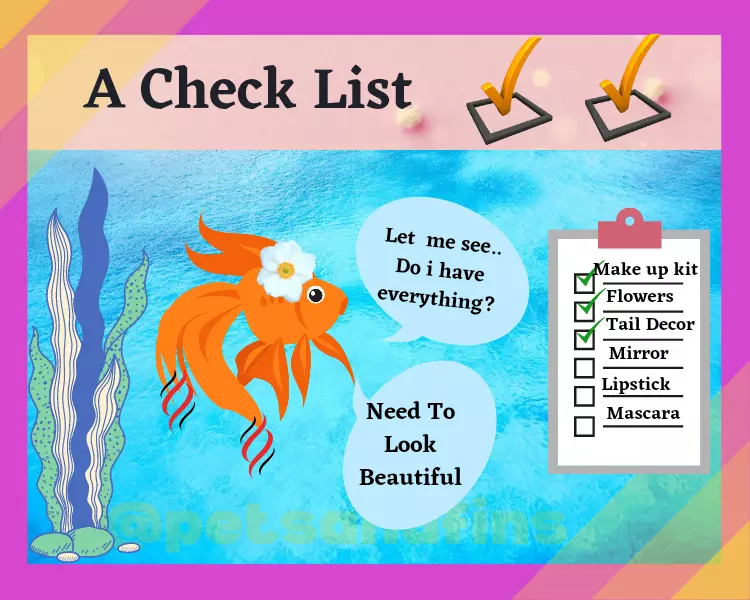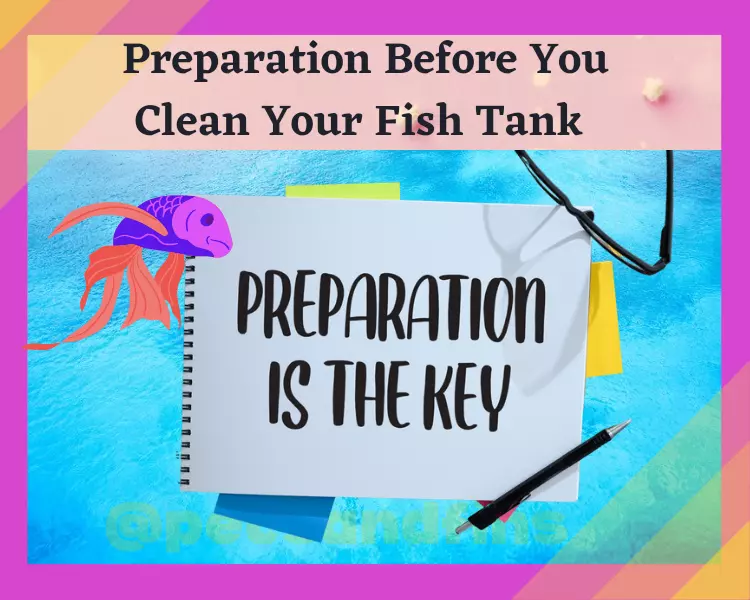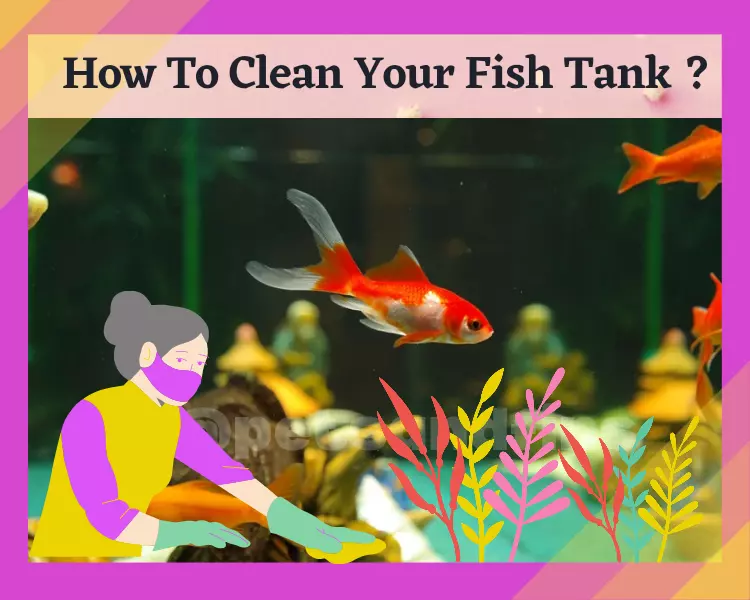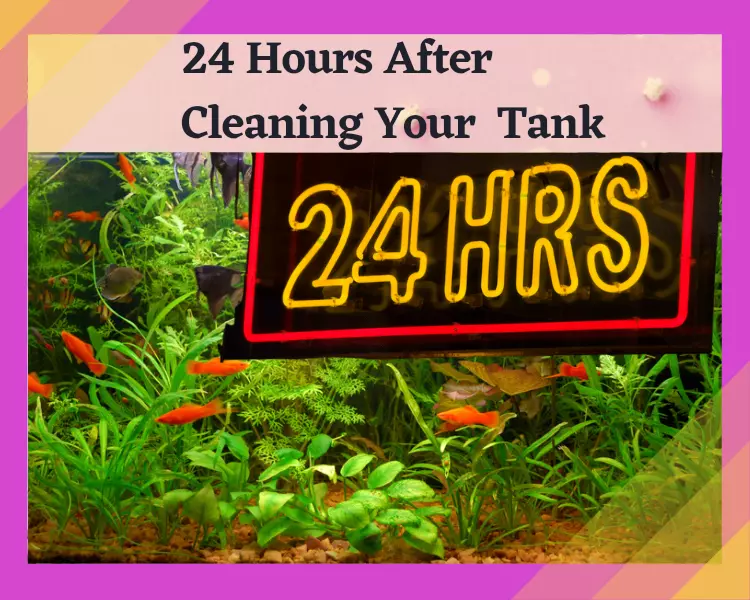If you’re a fish tank owner, then you know that keeping it clean is essential for the health of your fish. But how do you go about cleaning a fish tank? This can be a daunting task, especially if you’ve never done it before.
In this blog post, we will walk you through the process of cleaning a fish tank step by step. We’ll provide tips and advice on how to get the job done quickly and efficiently.
So read on to learn everything you need to know about cleaning a fish tank!
You Will Need:

- A soft cotton cloth or microfiber to wipe the tank
- Vinegar (if the outside of your glass is stained)
- A Siphon (if you are using a substrate that cannot be removed to clean)
- A bucket, a net cloth, and a thread (if you need to take the fish out – opt for this only if the tank is very dirty and the water is going to make the water murky. If you have another spare tank, that would be great.
- An aerator (to keep fish oxygenated)
- A fish net (always handy in any case)
- A dechlorinator
- A pipe cleaner (in case you have canisters or filter pipes)
- A scrub
- An All in one testing kit (if you are only changing the water partially- in any event, a very important asset )
- A toothbrush (if your tank has decorations and not a planted tank)
- A scissor (for plants)
- An Algae controller (in case you have algae issues)
- A water hose (with Appropriate connectors)
- Good Bacteria (if you are removing all the water)
Preparation:

Assess The Tank:
Start by assessing your tank. Use the siphon to test the substrate. If you know the water is going to become very murky, it is better to clean the tank after transferring the fish.
This is because the fish may become susceptible to infection. If the substrate is fairly clean then it is always recommended to leave the fish in the tank.
Stop The Power Supply:
Whenever you’re working with electrical devices, it’s important to ensure that the power supply is stopped before you start. This is to prevent any shock and to protect you from electrocution.
It also helps to prevent device damage etc. When you’re finished working, make sure to turn the power back on so that the device can continue to function properly.
Transfer The Fish:
Transferring fish from one tank to another is a very important task, and it must be done carefully. If done incorrectly, you could end up with a bunch of dead fish on your hands.
Final Check:
Now that you’ve transferred your fish to their new temporary home, it’s time to clean out their old tank. But before you get started, there are a few things you need to check off your list.
First, make sure that all of your fish have been transferred and that you have everything you need.
Now, you are ready to clean your tank.
How To Clean Your Fish Tank:

Remove The Devices:
Start by removing the devices like the heater, filters, etc. If there are detachable decorations, remove them too.
Devices and decorations that are not properly cleaned can release toxins into the water, which can be harmful to fish and other aquatic creatures.
In addition, they can harbor bacteria and algae, which can pollute the water and make it difficult for fish to thrive.
Clean The Substrate:
The best way to clean the substrate in your aquarium is to use a siphon. Simply put the siphon tube into the substrate and move it around so you shake up all the dirt and debris.
Then, just suck up the dirty water with the siphon and dispose of it. This method is quick, easy, and effective, and it will keep your aquarium looking its best.
Clean The Devices:
Now that you’ve removed all of the devices from your aquarium, it’s time to give them a good cleaning. You’ll want to remove the sponges or media and wash them thoroughly with plain water.
Be sure not to use any soap, detergent, chemicals, or any other medium. Make sure that all the dirt is gone. Put back the sponges etc in place and ensure that they are ready to be used.
Clean The Pipes:
If you want your pipes to be clean, you need to use a pipe cleaner. Wet the pipe cleaner and scrub through the pipes. Then rinse with water. It’s as simple as that!
Pipe cleaners are great for getting rid of all the dirt and grime that can build up in your pipes over time. This all ensures that any bacteria or fungus is removed and the water that you add later does not get contaminated.
This way the fish can stay healthy.
Clean The Decorations:
First, use the toothbrush to gently scrub off any dirt or grime that’s on the decoration. Be careful not to use too much force as you don’t want to damage the decoration.
You must do this slowly and carefully to protect the decoration from damage Use a toothbrush to gently scrub off the dirt. If your decorations are made of porous materials like wood or porous stone, the toothbrush is of great use.
Please use a mild detergent only if it is necessary. Rinse the decorations well in clean water.
Remove The Required Amount Of Water:
Did you know that you should only remove the required amount of water from your aquarium when doing cleaning or a water change? Many people mistakenly believe that they need to remove all of the water to clean the tank, but this is not the case.
Doing a full water change can be harmful to your fish. The key is to remove all the water only if it is really dirty or has high levels of ammonia or pH.
While cleaning the substrate, you have removed most of the dirt. Now stir the substrate again and then remove the water.
This way the remaining dirt goes upward and gets sucked out.
Clean The Inner Glass:
First, use a soft wet cloth to clean the inner glass. If need be, then use a toothbrush. Scrub gently. If you’re struggling to get some sticky stuff off, then you can try using the toothbrush.
Remember to be gentle and not apply pressure. Do not clean the outer glass at this point. Once you have removed all the dirt, rinse the wet cloth and wipe the glass one last time.
Assemble All Devices & Decoration:
It’s time to start putting the aquarium back together. Take care and time assembling everything slowly and neatly. Be sure that all devices are properly installed and secured.
Take a look at your handiwork and pat yourself on the back – you’ve almost completed a thorough cleaning of your aquarium!
It’s Time To Fill The Water :
First set right the substrate if needed. Take a plastic cover or bubble wrap and place it on the water. Now start filling your aquarium with fresh, dechlorinated water by allowing the water to fall on the plastic or bubble wrap.
This helps in two ways. One it prevents the substrate and plants from getting disturbed. Two, it prevents the water from becoming cloudy.
You don’t want to overfill, so make sure you stop before the water reaches the top of the tank. Once you’re finished, remove the cover or bubble wrap.
Switch On The Devices:
It’s time to switch on the devices in your aquarium and allow the filters to begin cycling and the heater to start functioning. If your filter lets out bubbles, don’t worry, that’s normal.
If you don’t have an air stone or other aerator, the filter will help oxygenate the water.
Just make sure the bubbles don’t rise too close to the top of the tank, or they could escape and make a mess.
Put Back The Fish:
You did it! You finally finished cleaning every nook and corner in the fish tank. Now it’s time to let the fish back in and watch them explore their sparkling clean home.
But before you start dumping them in, there are a few things you need to do to ensure a smooth transition.
First, take the temperature of the water in the tank and in the bucket where the fish have been hanging out.
Ensure that the difference is minimal, as a sudden change in temperature can shock and kill fish. Slowly add the fish back, allowing them to acclimate to their new surroundings.
Time To Clean The Outer Glass:
Now comes the last part. Wipe the Outer glass clean with a plain wet cloth. If you have tough stains then you can use some vinegar to rub them off.
Now stand back and watch your sparkling tank.
24 Hours Later:

What do you do when it’s been 24 hours since you last cleaned your tank? The first thing you should do is check the water quality using a comprehensive water testing kit.
This will help you determine the Ph levels and make sure that the water is safe for your fish. If the levels are too high or low, then you may need to adjust the filtration system or use an additive.
By taking these simple steps, you can ensure that your fish stay healthy and happy.
Things To Remember:

- If you have removed all the water and have freshly filled your tank with completely fresh water, then remember to add some good bacteria. This will help a lot.
- If You have used tap water and it is chlorinated water, then ensure you add the de-chlorinator.
- If you are adding any water from the bucket, you must allow all the dirt to settle at the bottom before you do so. A mug full would do. Use the fish net as a strainer while pouring the water.
When To Clean Your Tank:

How often should you clean your tank? Most people think it must be done often. But no. That’s not the case.
You need to clean the tank when the water is Dirty, Ph or ammonia levels are high, the water is becoming cloudy, and your fish are gasping or jumping Out of the water.
If you have a lot of fish, you might need to do a partial water change more often than if you have a few fish. A good rule of thumb is to do a 25% water change every 2-4 weeks.
But you always need to assess your tank and decide about full water change based on how your fish are doing and how dirty the tank looks.
If you wait too long to clean your tank, you might end up with a big mess on your hands! So don’t wait too long – clean your tank when it needs it. Neither too often nor too seldom.
Think Of A Canister:

If you’ve ever had an aquarium, you know that it can be a lot of work. Not only do you have to feed the fish and clean the tank, but you also have to constantly monitor the water quality.
One way to make your job a little easier is to use a canister filter. Canister filters are one of the most common types of filters used in aquariums, and for good reason.
They are very efficient at removing debris and waste from the water, and they also help to keep the water clear and free of harmful chemicals.
In addition, canister filters are relatively easy to maintain. As a result, using a canister filter is an easy way to keep your aquarium clean and tidy without having to put in too much effort.
Have a word with your local aquarium store which can help.
Wrapping Up:
Cleaning your tank may seem like a daunting task, but it is not so bad. All you need to do is know when it is time to clean your tank and voila! You can enjoy some fish yoga.
Have you ever cleaned your fish tank? If so, what tips would you add? Which part of this article helped the most? Do let us know!
If you have any questions, our team would be glad to answer. Thank you for reading!

